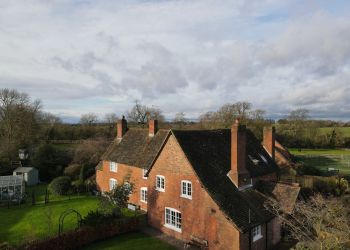According to English Heritage, a Listed building is recognised as being of national importance. Buildings with listed status are recorded on an official register called The List of Buildings of Special Architectural or Historic Interest. Buildings listed on the register are legally protected from being demolished, extended or significantly altered without special permission from the local planning authority. Listing doesn’t only apply to homes and commercial buildings. Other structures, including bridges, monuments, windmills or parks and gardens, may also be listed.
How will listing affect me?
Listing is not a preservation order, preventing change. It does not freeze a building in time, it simply means that listed building consent must be applied for in order to make any changes to that building which might affect its special interest.
Whether your building is a Grade II, Grade II* or Grade I, you will have to adhere to certain parameters, especially with regards to making material changes or adaptations. If you can fully understand these responsibilities then you will find owner a Listed building a great pleasure, providing character and warmth that is difficult to replicate.
So, what is different between buying a standard property vs a Listed one?
Well, not a lot from the point of view of the mortgages, solicitors etc. You will however find a major difference with insurances and we strongly recommend speaking to or friends at the Listed Property owners Club (lpoc.co.uk) for an impartial discussion and great advice in this area.
So, what about a building survey? Now this is different. You see, a listed Building Survey or RICS Building Survey will always look at the building stricture, defects, services amongst other things! But A listed Building Survey will require further, in-depth analysis looking at material changes t the building. This is only possible if the person surveying the building understands what he r she is looking at> Sounds obvious doesn’t it, however, this is a specialist area and every building s different. Understanding how it was built is important as this allows one to see what has changed. Then we have to assess when the changes happened, did they require consent? Did they receive consent for all of it?
Listed building consent is required for all material modifications. Repairs, maintenance are allowed. But did the builder who worked on the property repair with like for like materials? What materials did they use and are these harmonious with the building, or will they lead to defects further down the line. Remember, a common misunderstanding is that it is just the building, or part f the building that is Listed! This is wrong, the whole building plus curtilage will fall under the English Heritage Listing. It is especially important when buying a Listed Building to understand what changes have been made, whether any of these are unlawful and how these would be considered by the Local Authority. It does not matter if a previous owner undertook the unlawful modifications, the Local Authority could still take enforcement action against the current owner and this can result in the cost of rectifying the claim falling on your lap!
So, understanding the difference between a RICS Level 3 Building Survey and a Listed Building Survey is very important. We were contacted last week from a client who had received advice that a Chartered Surveyor that a RICS homebuyer survey would be adequate, this is wholly untrue and will not cover the property at hand with enough depth or understanding that is required. As this will be one of the biggest purchases you will ever make, you should ensure that you take the correct advice and speak to us today regarding the different types of building surveys, how we can help you with the house buying process and undertaking a Listed Property Survey at your potential new home.
As members of the Listed Property Owners Club, check out our page for further advice: Smith Heritage Surveyors – Listed Property (lpoc.co.uk)
